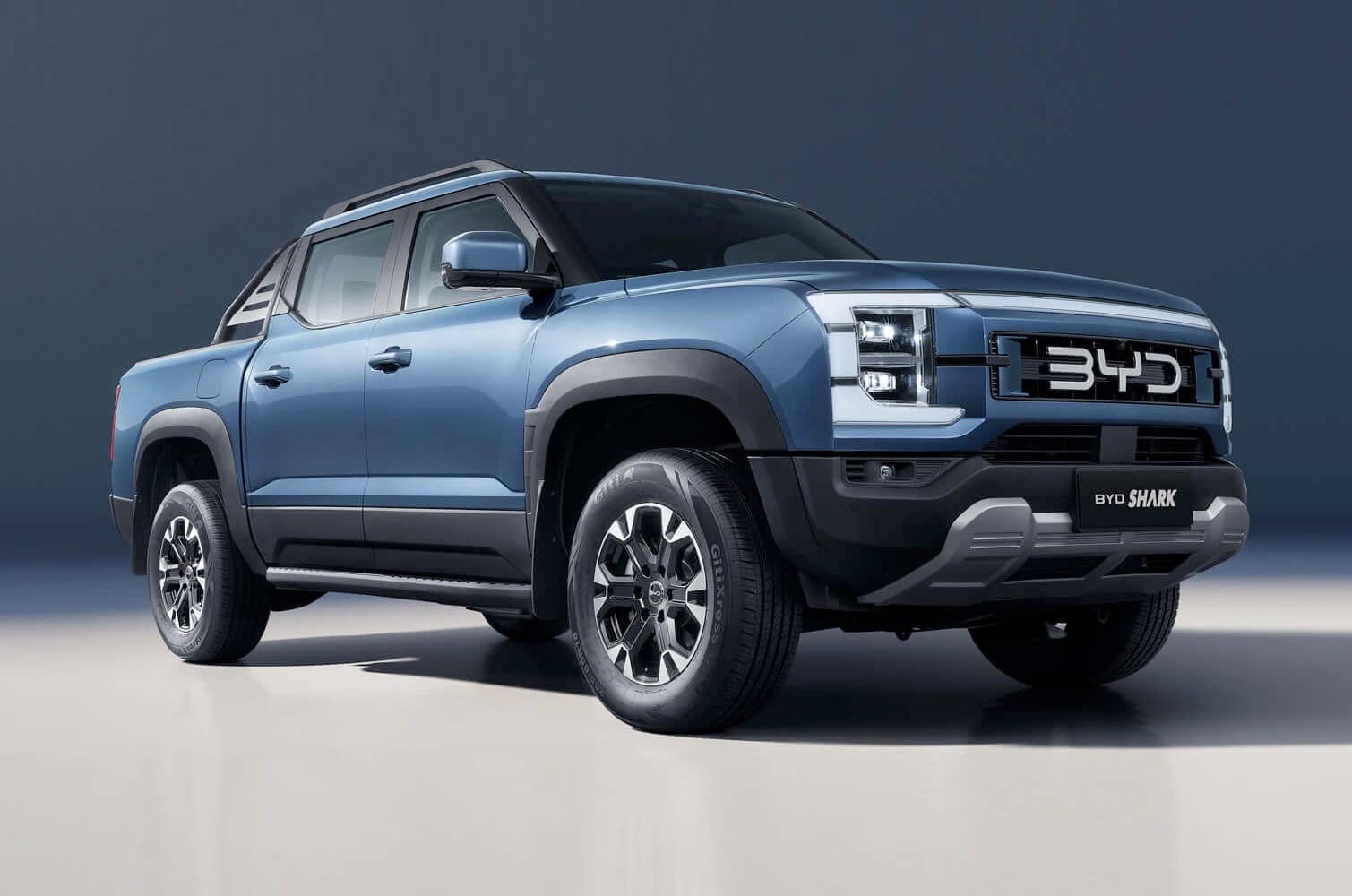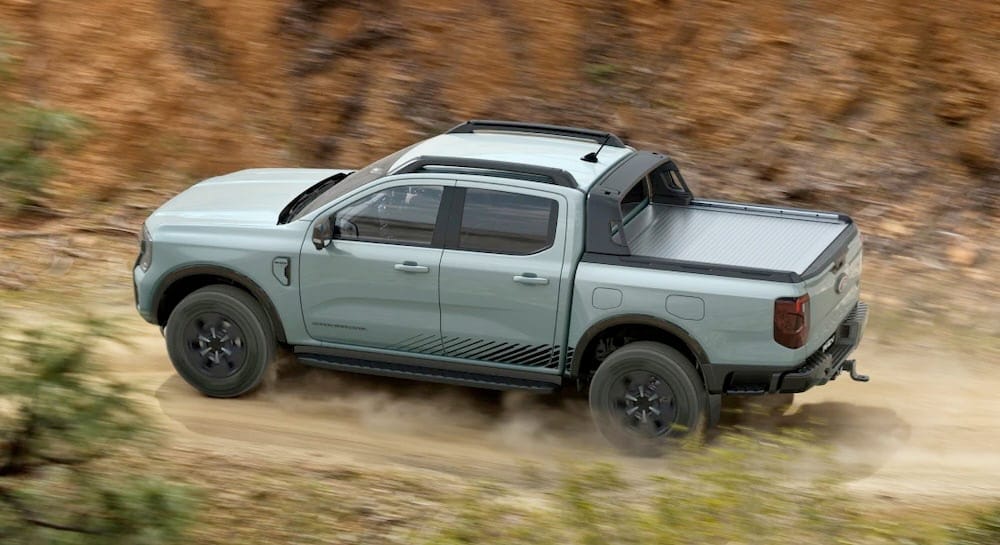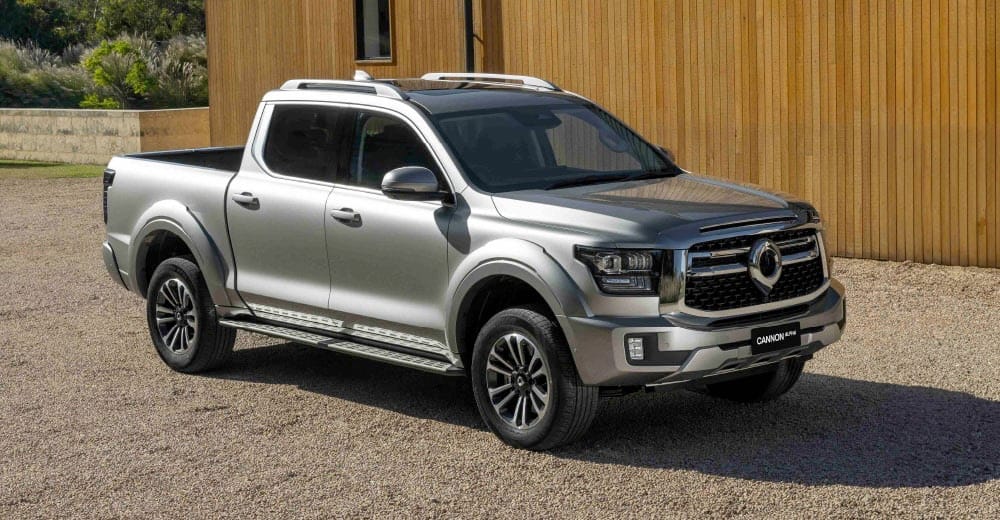Electric Utes: What’s available and what’s coming
A plug-in hybrid electric vehicle has a powertrain comprising an electric motor, battery, and a combustion engine. The battery can be charged externally (at home at very low cost, or at a public charger).
A PHEV powertrain provides several advantages for Utes:
- Low-cost, quiet, no-pollution travel for local trips.
- 230v power supply when on site (V2L or Vehicle-to-Load).
- Sufficient range for longer-duration trips (or trips with a heavy tow load).
What PHEV Utes are available in New Zealand?
Specs have been gathered from various sources and are subject to change.
| BYD Shark 6 | Ford Ranger PHEV | GWM Cannon Alpha PHEV | |
|---|---|---|---|
 |  |  | |
| When | Late 2024 | At dealers mid-2025 | 2025 Q1 |
| Price | $69,990 | $82,990 (XLT) $89,990 (Wildtrak) $94,990 (Stormrak) | ? |
| Trims | |||
| Battery size | 29.6 kWh | 11.8 kWh | 37.1 kWh |
| Fuel Economy | 2.0 L / 100 km (EV mode – 25-100% SoC) 7.9 L / 100 km (under 25%SoC) | 2.9 L / 100 km (EV mode – 25-100% SoC) —? | |
| Electric-only range | 100 km (NEDC). WLTP estimate: 85 km | 43 km | 110 km (WLTC) – which means lower WLTP |
| Combined range | 800 km | ||
| Combined power | 321 kW (650 Nm) | 207 kW (at 4700 RPM) | 300 kW (750 Nm) |
| Electric motor power | 170 kW (310 Nm) | ||
| Electric motor power | 150 kW (340 Nm) | 75 kW | 120 kW (400 Nm) |
| 0 – 100 km/h | 5.7 s | ||
| Combustion engine | 1.5L turbo-charged 4-cylinder petrol | 2.3L turbo-charged 4-cylinder petrol | 2.0L turbocharged 4-cylinder petrol |
| Braked towing max. | 2,500 kg | 3,500 kg | 3,500 kg |
| Max payload | 793 kg | 973 kg | |
| Max. charging speed | AC: 7 kW / DC: 55 kW | ||
| V2L outlets | Yes (including 3x 10A standard sockets in the back tray) | One interior plug, two on tray. Max output 6.9 kW. | |
| Ground clearance | 230 mm | 224 mm | |
| Wade | 800 mm | 800 mm | |
| Source URL | BYD | Ford NZ |
Depending on the configuration of the powertrain, multiple modes of travel are available:
- Combustion only.
- Electric travel only (drawing electricity from the battery to power an electric motor).
- Range extending (travelling via the electric motor, but the combustion motor charges the battery).
A PHEV will also use regenerative braking to convert kinetic energy back into electricity in the battery (further extending the electric range).
Ford Ranger PHEV modes
- EV Now: electric-only drive
- EV Later: holds some charge in reserve (for later use)
- EV Charge: recharges the battery while driving
- Auto EV: let the vehicle choose
The GWM Cannon Alpha is currently available as a standard hybrid (i.e., it does not allow external charging and has a much smaller battery).
What about fully electric utes?
Fully electric vehicles (Battery Electric Vehicles—BEVs) do not have combustion engines and rely completely on externally charged batteries.
LDV introduced a BEV ute to market in 2022, with limited success.
A fully electric powertrain poses challenges for the specific demands of a ute.
- Utes are large, heavy vehicles with poor aerodynamics, leading to high energy consumption. This then requires a very large battery (which, in turn, makes the vehicle considerably heavier).
- The extra weight of the battery, plus payload, could push the vehicle over the GVM (Gross Vehicle Mass) limit of 3,500 kg – which constitutes a ‘light vehicle’ (under legislation). This complicates the process of having ‘light’ full-electric Utes on the road.
- A smaller battery compromises the vehicle’s range. Energy demands from load and towing also require significant amounts of energy.
- Batteries are also the highest-priced component of an electric vehicle, driving up the costs of EVs with large batteries.
Example: The LDV eT60 supplied 325 km of WLTP range from its 88 kWh battery. However, a modern, efficient electric sedan (such as the BYD Seal) has a range of 570 km from an 84 kWh battery.
Some BEV utes (light trucks) are available in the USA. However, they are very large, heavy, and have a high price tag.
Example: The USA Ford F-150 Lightning (starts at over $NZD 100,000) can get very heavy. The platinum trim weighs over 3.2T (without load). The extended-range model has a massive 130 kWh battery (it takes a long time to charge).
For fully electric utes to become viable and price-competitive, battery energy density must improve sufficiently.
BEV Utes
LDV eTerron 9 – possibly coming to Australia.
- 3500kg braked towing capacity
- Dual electric motors (323kW).
- All-Terrain system with six driving modes
- 102kWh lithium iron phosphate (LFP) battery
- 427km driving range
- 20% to 80% charge in ~40 minutes with a 115kW fast charger
- Vehicle-to-load (V2L) capability
KGM Musso – Released in South Korea 2025.
Geely Riddara RD6—built for the Thailand market, it has two battery options (63 or 86 kWh) and a fast charge speed of 120 kW. Its max range is 517 km (CLTC—so about 424 km WLTP). Its length is 5260 mm x 1900 mm wide and 1830 mm tall.
JAV T9 Hunter
